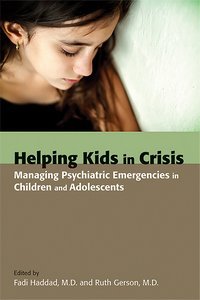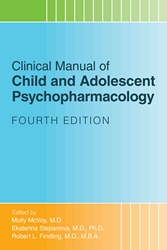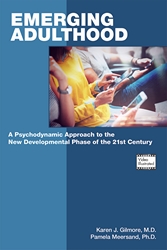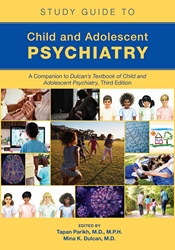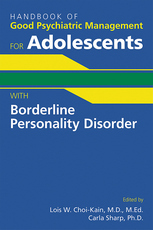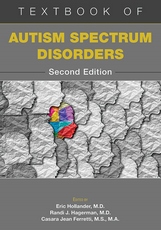Helping Kids in Crisis
Managing Psychiatric Emergencies in Children and Adolescents
View Pricing
Description
Helping Kids in Crisis: Managing Psychiatric Emergencies in Children and Adolescents provides expert guidance to practitioners responding to high-stakes situations, such as children considering or attempting suicide, cutting or injuring themselves purposely, and becoming aggressive or violently destructive. Children experiencing behavioral crises frequently reach critical states in venues that were not designed to respond to or support them—in school, for example, or at home among their highly stressed and confused families. Professionals who provide services to these children must be able to quickly determine threats to safety and initiate interventions to deescalate behaviors, often with limited resources. The editors and authors have extensive experience at one of the busiest and best regional referral centers for children with psychiatric emergencies, and have deftly translated their expertise into this symptom-based guide to help non-psychiatric clinicians more effectively and compassionately care for this challenging population.
The book is designed for ease of use and its structure and features are helpful and supportive:
- The book is written for practitioners in hospital or community-based settings, including physicians in training, pediatricians who work in office-based or emergency settings, psychologists, social workers, school psychologists, guidance counselors, and school nurses—professionals for whom child psychiatric resources are few.
- Clear risk and diagnostic assessment tools allow clinicians working in settings without access to child mental health professionals to think like trained emergency room child psychiatrists—from evaluation to treatment.
- The content is symptom-focused, enabling readers to swiftly identify the appropriate chapter, with decision trees and easy-to-read tables to use for quick de-escalation and risk assessment.
- A guide to navigating the educational system, child welfare system, and other systems of care helps clinicians to identify and overcome systems-level barriers to obtain necessary treatment for their patients.
- Finally, the book provides an extensive review of successful models of emergency psychiatric care from across the country to assist clinicians and hospital administrators in program design.
An abundance of case examples of common emergency symptoms or behaviors provides professionals with critical, concrete tools for diagnostic evaluation, risk assessment, decision making, de-escalation, and safety planning. Helping Kids in Crisis: Managing Psychiatric Emergencies in Children and Adolescents is a vital resource for clinicians facing high-risk challenges on the front lines to help them intervene effectively, relieve suffering, and keep their young patients safe.
Contents
- Contributors
- Introduction
- Acknowledgments
- Chapter 1. Kids in Crisis
- Chapter 2. Aggression
- Chapter 3. Suicide and Self-Injurious Behaviors
- Chapter 4. Tantrums and Behavioral Outbursts
- Chapter 5. The Odd Child
- Chapter 6. Child Abuse and Trauma
- Chapter 7. Risky Behaviors
- Chapter 8. Clinical and Forensic Psychological Issues With At-Risk Youths and Juvenile Delinquents
- Chapter 9. Substance Use: HELPING TEENAGERS AND FAMILIES WORK THROUGH A SUBSTANCE USE CRISIS
- Chapter 10. Finding Help: HELPING FAMILIES FIND EFFECTIVE TREATMENT FOR CHILDREN WITH PSYCHIATRIC ILLNESS
- Chapter 11. Models of Emergency Psychiatric Care for Children and Adolescents: MOVING FROM TRIAGE TO MEANINGFUL ENGAGEMENT IN MENTAL HEALTH TREATMENT
- Index
Contributors
- Maggie Bielsky, LMSW
Gabrielle S. Carson, Ph.D.
Ruth Gerson, M.D.
Charles J. Glawe, M.D.
Fadi Haddad, M.D.
Jennifer F. Havens, M.D.
Alessandra D. E. Herbosch, Psy.D.
Rachel Mandel, M.D.
Mollie C. Marr, B.F.A.
Jasmine Marrero, LCSW
Melissa Negron, LCSW
Stephen Ross, M.D.
Susan B. Torrey, M.D.
M. Cevdet Tosyali, M.D.
J. Rebecca Weis, M.D.
About the Authors
Fadi Haddad, M.D., is Director Emeritus of Bellevue Hospital Children's Comprehensive Psychiatric Emergency Program, and Clinical Assistant Professor in the Department of Child and Adolescent Psychiatry at New York University School of Medicine in New York, New York.
Ruth S. Gerson, M.D., is the Director of Bellevue Hospital Children's Comprehensive Psychiatric Emergency Program, and Clinical Assistant Professor in Department of Child and Adolescent Psychiatry at New York University School of Medicine in New York, New York.
Related Products
Carousel Control - items will scroll by tabbing through them, otherwise arrows can be used to scroll one item at a time
